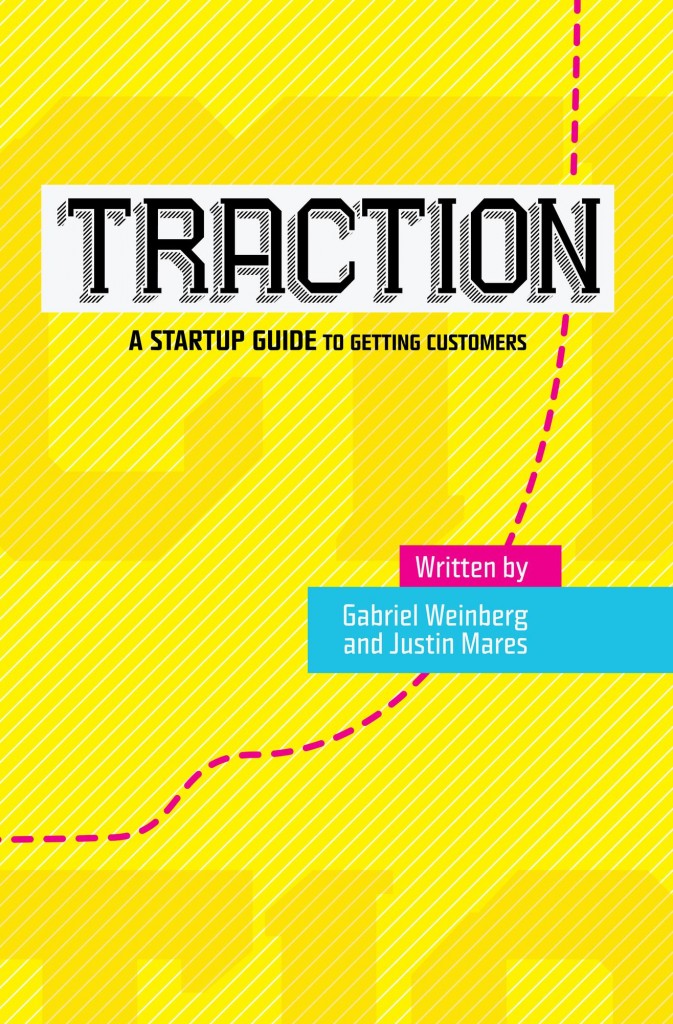 Traction: A Startup Guide to Getting Customers can act like a extended cheat sheet while trying to figure out your business is going to get customers. When businesses startup, they have a lot of different options. So many it can feel overwhelming. At almost any stage of a small business, figuring out how to reach the people who might be interested in your product remains one of the most challenging things to do. Almost anybody with 10 minutes and a pad of paper won’t have trouble coming up with ideas on how to get people’s attention. There’s no shortage of ideas, just obviously beneficial ones. It’s choice paralysis.
Traction: A Startup Guide to Getting Customers can act like a extended cheat sheet while trying to figure out your business is going to get customers. When businesses startup, they have a lot of different options. So many it can feel overwhelming. At almost any stage of a small business, figuring out how to reach the people who might be interested in your product remains one of the most challenging things to do. Almost anybody with 10 minutes and a pad of paper won’t have trouble coming up with ideas on how to get people’s attention. There’s no shortage of ideas, just obviously beneficial ones. It’s choice paralysis.
In business, these choices can be categorized. Not perfectly, but well enough to be useful. As language usually does, this categorization can make it easier to understand a problem. In the case of Traction, these categories are called “traction channels”. Social media is a traction channel. Billboards are traction channels. Radio advertising is a traction channel. Direct mail, PR and others are traction channels.
In addition to providing an overview of all the most common channels, Traction attempts to set the reader up with a system to help them find the best channel for their business. Unfortunately, I found this a little flimsy. Perhaps it was written too hastily, or maybe it was a result of just how much information was written about each channel, but by the end of the book, their methods were hardly even in the back of my mind.
The authors refer to this system, or framework, they introduce as “Bullseye”–which is essentially a series of experiments to try and discover which channels will work for your business. None of this seems especially ground breaking to me. But, one thing the authors recommend considering purposefully, and I agree, is that contrary to how a lot of business owners feel, you don’t have to be in every channel.
A lot of people get stuck on the idea that if they spread themselves out far enough, it will surely pay off. But the truth of the matter is, some business aren’t going to benefit at all from a billboard or magazine ad. Not every business needs PR, or a Twitter account. In fact, doing something mediocre in lots of different channels isn’t likely to ever be as beneficial as doing something remarkable in just a few of them.
Traction felt somewhat over stated. Although the write up for each channel was thorough, most people will probably read through a couple pages of each chapter and pretty quickly get the drift. The good news is that they’re not just filling those sections with fluff, or constantly restating themselves. Each section gives some pointers to what to look for if you think that might be the right channel for your business, and takes insight from business owners who’ve used those channels.
All in all, each of the 25 or so chapters cost me about 20 minutes to read. Even for the subject matter, I wouldn’t call it especially entertaining. But, as is true for most honestly useful things, it takes some discipline to get through. I don’t recommend picking up this book until you’re actually at the stage where you’re scratching your head and saying, “So whose going to buy this?”

Recent Discussion